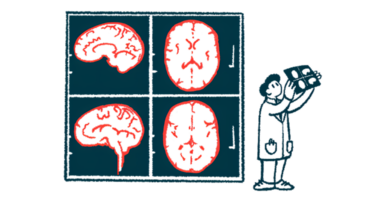MS lesions may start as small clumps of microglia in patient’s brain
Tissue samples with these nodules also show more lesions and active lesions

In multiple sclerosis (MS), lesions in the brain may start with small clusters of immune cells called microglia, a new study reveals.
Scientists are working to understand exactly how these small clusters may develop into MS lesions, which they hope could uncover new targets for treating the disease.
“Now we need to explore the relationship between all these inflammatory components … so we can understand exactly what leads to these early signs of breakdown. After that, we can start thinking about which steps we can remove from this process to avoid the development of new lesions altogether,” Aletta van den Bosch, a neuroimmunology group researcher and study co-author at the Netherlands Institute for Neuroscience, said in an institute press release.
The study, “Profiling of microglia nodules in multiple sclerosis reveals propensity for lesion formation,” was published in Nature Communications.
What causes MS lesions to form is not fully understand
In MS, inflammation in the brain and spinal cord leads to regions of damaged, scarred nerve tissue. These lesions are a hallmark of the disease, but how they develop isn’t fully understood.
Microglia are resident immune cells of the brain. They help to protect the brain against infection and also act as the brain’s main sanitation workers, helping to collect and dispose of molecular debris.
It’s been known for decades that microglia in MS patients sometimes form atypical clumps called microglia nodules. These nodules are seen in brain tissue that otherwise doesn’t appear damaged, and some researchers have proposed they could be an early sign of lesion formation.
The biggest problem with that theory is that microglia nodules aren’t just found in MS — they’re also seen in other neurological disorders like stroke, but those conditions are not marked by lesions. So if microglia nodules are indeed the early stage of MS lesion formation, there must be something about these nodules in MS that differs from other disorders.
To learn more about the role of microglia nodules, scientists analyzed brain samples from the Netherlands Brain Bank MS cohort. In samples of postmortem brain tissue from 167 MS patients, about two-thirds (64%) had detectable microglia nodules. These patients also had more lesions and more signs of active inflammation in the brain compared with samples from patients with no detected nodules.
“We found that patients with these nodules have a worsened pathology: they have more lesions and the lesions are more active,” van den Bosch said.
Microglia nodules also in brain tissue affected by stroke, but with differences
Scientists then compared microglia nodules in brain tissue from people with MS to those in tissue samples from people who had a stroke.
“As microglia nodules in stroke are not involved in lesion formation, differences between microglia nodules in MS and in stroke may reveal mechanisms behind MS lesion formation,” the scientists wrote.
Results showed microglia nodules occurred more frequently in MS brains, but the nodules were of comparable size in both disorders. Additionally, some microglia nodules in MS brains expressed many inflammatory genes that are known to be expressed highly in MS lesions — and these inflammatory genes were not expressed highly by microglia nodules in stroke brains.
“We recognized many of the genes in the MS nodules quite quickly because they’re also expressed in the active lesions,” van den Bosch said.
Nodules in MS brain tissues, but not of those in stroke, also showed signs of a generally more inflamed environment, such as higher counts of nearby inflammatory immune cells.
MS is marked by damage to the myelin sheath, which is a fatty covering that surrounds nerve fibers. The researchers found that nearly half of microglia nodules in MS brains, but none in stroke brains, were in close proximity to nerve fibers that had damaged myelin.
These microglia nodules also expressed genes that are known to be important for breaking down and processing fats like those found in myelin.
“When we looked at the axons [nerve fibers] surrounded by the nodules at high resolution, we saw that they were associated with partially demyelinated axons. These nodules likely arose to clean up the oxidized [damaged] myelin,” van den Bosch said.
According to van den Bosch, microglia that become activated — both by the metabolic changes needed to break down myelin and inflammatory signals from other immune cells — “may become very inflammatory, causing more damage to the tissue surrounding them, leading to a sort of downward spiral” that ultimately could lead to the formation of MS lesions.
Study results suggest that “some microglia nodules in MS are likely sites of lesion initiation, and represent an interesting therapeutic target to prevent early demyelination and MS lesion formation,” the researchers concluded.







